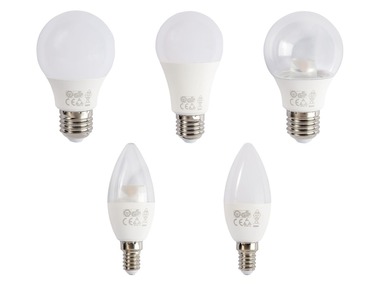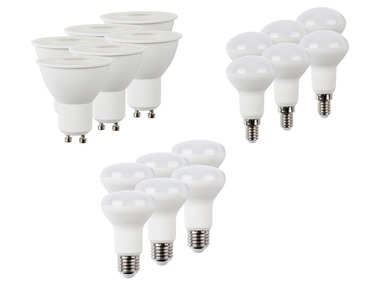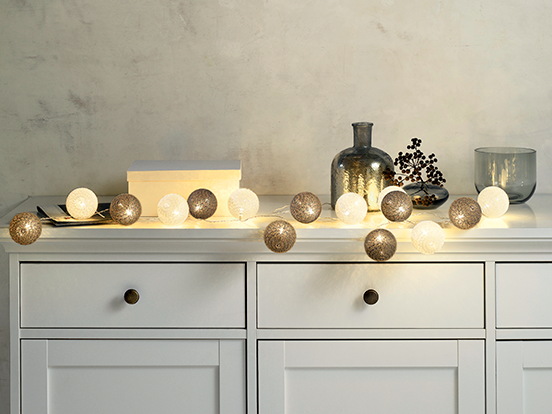Thanks for the work djozz. All your candidates have very great Duv values, special mention to the negative value of the Yuji.
Do you have R12 and Rf measurements also?
Thanks for the work djozz. All your candidates have very great Duv values, special mention to the negative value of the Yuji.
Do you have R12 and Rf measurements also?
I never used TM30 on my meter before, but I just added it to the parameters, had to measure again and had to look up what Rf and Rg were :innocent: :
Yuji 4000K: CCT=4035, duv=–0.0008, CRI=96.1, R9=90.9, R12=73, Rf=91.3, Rg=100.7
Philips ExpertColor 3000K: CCT=3009, duv=+0.0013, CRI=97.3, R9=89, R12=83, Rf=93.9, Rg=100.4
Philips ExpertColor 2700K: CCT=2796, duv=+0.0011, CRI=97.8, R9=89.6, R12=84, Rf=92.7, Rg=98.8
Waveformlighting 2400K filament light bulb
CCT: 2342K
DUV: –0.0032
CRI (Ra): 96.0
R9: 81.9
Rf: 93
Rg: 102
Blue Peak: 0.23
I absolutely love the negative DUV so it doesn’t look overly yellow. It is great as a nighttime light to minimize melatonin suppression. It is one of the lowest blue emitting lights I’ve measured, which is about right for the color temp but it still contains about 3x as much blue light as the E21A 2000K 9080.
That might be a tad harder at the moment.
Last time I checked, top of the class was LIFX with close to 90 values (~86).
I have updated the first post table with your results, thanks again.
That's a shame really that there's no E26/E27 equivalent to those GU10 spots in Philips' current product range. They are not perfect, but very decent (R9 and R12 are still too low).
“Waveformlighting 2400K filament light bulb”:Lux24™ Circadian LED Bulb - 2400K 95 CRI E26 A19 LED Filament Bulb – Waveform Lighting CCT: 2342K DUV: -0.0032 CRI (Ra): 96.0 R9: 81.9 Rf: 93 Rg: 102 Blue Peak: 0.23 I absolutely love the negative DUV so it doesn’t look overly yellow. It is great as a nighttime light to minimize melatonin suppression. It is one of the lowest blue emitting lights I’ve measured, which is about right for the color temp but it still contains about 3x as much blue light as the E21A 2000K 9080.
Thanks for your input SKV89, I have added your results to the first post table. The 0,23 blue peak does mean the overall curve has a nice shape and no, peak per-se, in the blue area?
Waveformlighting 2400K filament light bulb
CCT: 2342K
DUV: –0.0032
CRI (Ra): 96.0
R9: 81.9
Rf: 93
Rg: 102
Blue Peak: 0.23I absolutely love the negative DUV so it doesn’t look overly yellow. It is great as a nighttime light to minimize melatonin suppression. It is one of the lowest blue emitting lights I’ve measured, which is about right for the color temp but it still contains about 3x as much blue light as the E21A 2000K 9080.
Thanks for the test! I wanted to get a below-2700K LED bulb with negative duv, this one looks great.
Guys, if I want to create a "BLF Bulb Quality factor™" to "scientifically" order my first post table, what would you advise as metrics/formula? Which Rx, or other parameters to factor in?
Draft proposal => Qf = [(Ra *1)+(R9*3)+(R12*3)+(Rf*3)] / 10
[Philips ExpertColor] They are not perfect, but very decent (R9 and R12 are still too low).
There is a point at which perfection can only be measured and not be seen at all by eye, are you sure you did not pass that point already? ![]()
…
Now B22 mostly remain in usage in UK, India and Australia. France is “converting” (don’t know of norms fixing that decision, seem to me it’s a market general decision) to B22 since some years (decades), but you will still find some bayonet in old houses/rooms. The majority of Europe uses B22.
I guess you mean France is converting from B22 to E27, and the majority of Europe uses E27?
There is a point at which perfection can only be measured and not be seen at all by eye, are you sure you did not pass that point already?
That's a valid point, but from a number POV we have better offers from alternate manufacturers regarding R9 and R12 than the ExpertColors. Now, could I, could you, could the readers here, feel the differences, and what color rendering would they prefer? That's a good question.
To be sure about that, we'd need a setup with every "bulb contestant", and be able to blindly switch between the lights, and slowly build a prefered order. Kind of an ABX test adapted to lights infact.
But, isn't the title of this thread "Ultra High CRI"? ![]() And well, the subtitle of this thread could also be "Never accept compromises, to the infiniiiite and beyond..."
And well, the subtitle of this thread could also be "Never accept compromises, to the infiniiiite and beyond..." ![]()
I guess you mean France is converting from B22 to E27, and the majority of Europe uses E27?
Slip of the tongue, thanks to point it to me! I'm correcting that.
Guys, if I want to create a “BLF Bulb Quality factor™” to “scientifically” order my first post table, what would you advise as metrics/formula? Which Rx, or other parameters to factor in?
Draft proposal => Qf = [(Ra *1)(R12*3)+(Rf*3)] / 10
I was actually thinking about this a few weeks ago. I think you are including the right things. But the best results would best be a simple scale from 1 to 10, but not try to fit the scale to the whole market today. For example, a 5 would actually be an above average light today, a 10 would be a future perfect light, and a 1 and 2 would be many of the lights on the market today. The idea of fitting the scale like that would so it doesn’t become obsolete by not accounting for improved technology in the next few years.
Thanks for your input SKV89, I have added your results to the first post table. The 0,23 blue peak does mean the overall curve has a nice shape and no, peak per-se, in the blue area?
yes the blue zone is very small, with blue peak is mild at 23% only.
Talking about the blue peak, Luminus has brought a new 3030 led on the market that has the cyan gap filled up (or even made into a cyan peak) so that high CCT’s can be made with a lower blue peak. It is called Luminus “Salud”.
349.80 KB
Luminus LEDs are ideal for demanding applications that require maximum lumen density, efficiency and reliability.
Professional lightning Philips CRI97 spotlights, I have them here in my living room
Philips Master GU10 LED Spot 5.5W 375Lm WW dimmable

Perfekt Lichtqualität mit Ra97, perfekte Lebensdauer und perfektes Dimmen kombiniert! | Philips
They got also CRI90 E27 lamps here
2700K
https://www.lighting.philips.de/prof/led-lampen-und-roehren/led-gluehlampen/corepro-ledbulb-gluehlampenform/929002069502_EU/product
2200K
https://www.lighting.philips.de/prof/led-lampen-und-roehren/led-gluehlampen/master-ledbulb-gluehlampenform/929002218602_EU/product
2700K filament
https://www.lighting.philips.de/prof/led-lampen-und-roehren/led-gluehlampen/led-lampen-mit-klassischem-gluehfaden/929002019002_EU/product
Philips claim 90CRI
https://www.lighting.philips.com/main/prof/led-lamps-and-tubes/led-bulbs/master-ledbulbs
And
https://www.airam.fi/en/product/v7640-2256/4711539/led-op-a60-10-5w-940-e27-cri90-bx/294/1
Livarno Lux bulbs from Lidl are advertised as high CRi (>95, sometimes 97 or even 100), they’re pretty cheap at 1,5-5€ each (depends on the country and model) and they come in various shapes, sockets (G10, E14, E27), from 250 to 806 lumens. Sources:
Germany

LIVARNO LUX® 2 bzw. 3 LED-Leuchtmittel im LIDL Online-Shop kaufen ✓ 30 Tage Rückgaberecht ✓ Schneller Versand ✓ Flexibler Ratenkauf ✓ Jetzt bestellen!
Poland

LIVARNO LUX Żarówka reflektorowa LED, 6 sztuk w sklepie internetowym LIDL. Dostawa do paczkomatu ✅ 30 dni na zwrot ✅ Bezpieczne płatności
Spain

Descubre nuestro catálogo de productos de iluminación de techo para cocinas modernas, pasillos y las demás estancias. ¡Disponibles Lidl online!
Ikea >> sub-90CRI seems not enough for our "Ulta High CRI" topic. But it's great that a "big name of house equipments" is putting CRI on its product. A good way to eduquate consumer in the long run. Do they offer better lines?
Philips >> GU10 CRI97 offering is great, for sure. Why don't they also make E27 bulbs out of it is a mystery. Maybe a double targetting bias, where GU10 is used to target shops/pro displays, whereas E27 is viewed as consumer only format, and consumer as deemed not interested in great CRI?
Airam >> Do you have tests or more detailled specs somewhere about this bulb?
LIDL >> claimed specs are interesting, but I can't help but being dubious about a CRI100 offering (who would/could be their manufacturer?). That is making me "scientifically doubt" about pretty much their other claims too, as a consequence. Other bias in my reasonments is that with those "white branded" products, the inside of the product could change with each production run. Any tests (and more precise references) somewhere ?
The "trick" with pretty much manufacturer claiming good/great CRI will fall under the CIE vs TM-30 measurements caveats. The common old CRI index is proven to be unfit to adequately qualify LEDs flux (too much pastel colors, not taking into account full spectrum, etc). That's why TM-30 is aiming to perfect that situation and that's why I've added from the start R9 (deep red), R12 (deep blue) and Rf (full spectrum) values.
A manufacturer can claim a great CRI value (so based only on R1-R8 values), but producing for instance "badish" results on R9 and R12. And as such giving a "meehish" render in our homes.
I've started to rebuild my table, with the BLF Bulb Quality factor™ proposal, you cand find it there.

Have to think a bit more about the proposal of Joshk for its scale.

IKEA Ledare, type LED1708R5.
A dimmable GU10 bulb that uses very warm leds at the lowest brightness setting and gets cooler tint at higher setting by gradually mixing in a cooler set of leds and switching off the warm set at the highest setting.
Lowest settings, just the warm leds:
CCT=2060, duv=+0.0012, CRI=93.6, R9=58, R12=98, Rf=93.2, Rg=96.8
An intermediate setting, some cooler light mixed in:
CCT=2450, duv=+0.0005, CRI=93.8, R9=60, R12=92, Rf=92.6, Rg=99.4
Highest settings, just the cooler set of leds, warm leds are off:
CCT=2640, duv=+0.0008, CRI=91.7, R9=54, R12=88, Rf=90.3, Rg=100.0

IKEA Ledare, type LED1521R6
A 2700K 90+CRI GU10 bulb, non-dimmable
CCT=2850, duv=+0.0014, CRI=91.9, R9=59, R12=83, Rf=91.0, Rg=99.9
too bad all IKEA above BBL